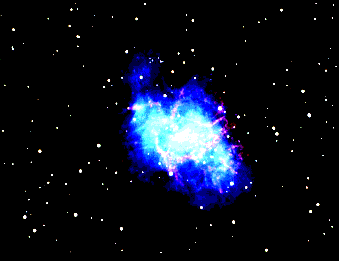92. Unstable Galaxies
Computer simulations of the motions of spiral galaxies show them to be highly unstable; they should completely change their shape in only a small fraction of the universe’s assumed evolutionary age.b The simplest explanation for so many spiral galaxies, including our Milky Way Galaxy, is that they and the universe are much younger than has been assumed.

Figure 35: The Crab Nebula. In A.D. 1054, Chinese observers (and perhaps Anasazi Indians in New Mexico and Arizona) witnessed and described a supernova. It was visible in daylight for 23 days and briefly was as bright as a full moon. Today, remnants from that explosion comprise the Crab Nebula.
Thanks to radio telescopes, most of these remnants should be visible for a million years. At the rate supernovas are occurring in galaxies like ours, we have only about 7,000 years’ worth of remnants.
Planet-size bodies are sometimes found inside triple-star systems. Since it is simply a matter of time before those bodies are expelled from such systems, the simple fact that they have not been expelled from their unstable orbits by the chaotic gravitational attraction of those stars, means that those systems and their planet-size bodies are young.